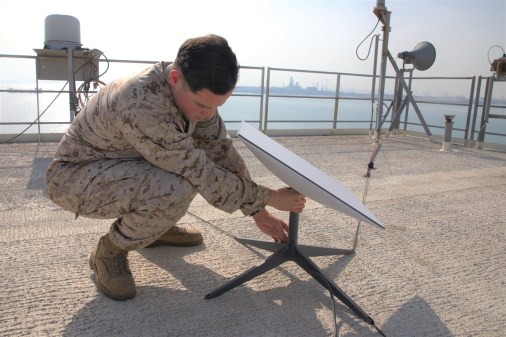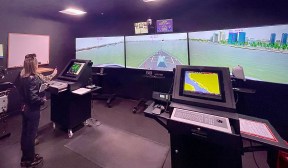Navy taps data, microgrids to modernize and innovate against climate change

Many U.S. Naval installations are right on the water’s edge and are at risk from climate change and dangerously aging infrastructure. But according to two of the Pentagon’s top climate officials, the Navy is deploying emerging and advanced technologies to maintain and modernize its onshore stations.
During the Google Defense Forum presented by DefenseScoop on Jan. 25, Deputy Chief Sustainability Officer and Acting Principal Deputy Assistant Secretary of Defense for Energy, Installations and Environment Rachel Ross, and Senior Advisor to the Navy’s Climate Change Secretary Deborah Loomis spotlighted some of the ways their teams aim to address those pressing weather and structural challenges.
“We can’t appropriate our way out of the problem. The backlog of maintenance is close to $150 billion. So, we definitely need to work with our industry partners for joint investments. Data is a huge, huge opportunity. We have been an unsophisticated customer, to be kind. So looking at ways to automate and streamline — for example, our utility bills — to be able to understand what our electricity use is and where. So, we went from using year-old data to now having real-time, 15-minute interval data for almost 40% of our footprint,” Ross said.
The Navy is also working to apply data-based modeling and simulations to inform infrastructure-related decision-making — particularly through the new multibillion dollar Shipyard Infrastructure Optimization Program.
“I’m told it’s one of the largest modeling-and-simulation efforts ever undertaken, because we are literally looking at how you’d totally modernize all of the operations of a shipyard,” Loomis explained.
Because bases and installations can often rely on decades-old water systems, these simulations don’t just look into the shipyards themselves — but also deep into other components across their maintenance enterprise, to include depots and other facilities.
“Naval Station Norfolk loses power about 100 times a year, which is really shocking. And that’s just not sustainable. So we are investing a lot into kind of shoring up those really critical infrastructure systems,” Loomis said.
She and Ross acknowledged how most military installations can be thought of as standalone “mini-cities.” However, they noted that the Navy is working to collaborate with local towns regarding the procurement of energy and municipal services that are essential to bases near them.
“We view the installations and the communities around them as sort of one living organism. It’s hard to separate them out — 70% of the service members actually live off base, as you know — so being able to address these issues together with the community is very important. We have grant programs and other ways to incentivize more partnership and to be able to infuse resources where they’re needed,” Ross said.
The Navy is also revamping and enhancing its existing cooperation with local utilities.
“We’re partnering with the Edison Electric Institute and their members that are working to offer services and incentives to the local installations when it comes to having efficiency measures or third-party financing for integrated upgrades that we need to install at these locations — where we can’t fund it ourselves, but maybe the utility partner can,” Ross noted.
She and Loomis spotlighted a recent “microgrids” use case on the West Coast. Officials at Marine Corps Air Station Miramar, for a while now, have been working to “island” their capabilities and come off of the San Diego area’s electric grid, as needed.
“They do this routinely so that when South-Southern California is experiencing a brownout — or to avoid a brownout — we’ll come on to our microgrid so that the lights can stay on at about 3,000 homes in the community that otherwise might have been subjected to that brownout,” Loomis said.
“We do the same thing on our ships. When we have heat waves, again, in San Diego, about 10 ships a day will come onto their own ships’ power to take that load off of the grid. Now, that’s a good news story and not a good news story, because that’s not optimally how you want to run a ship and port. You want to be attached to shore power. So, we’re also looking really hard at how we integrate those operational and shore energy needs and how we get battery backup power on that pier,” she added.
During the panel, the senior officials also provided some feedback to their industry partners regarding new capabilities they’re on the lookout for.
“I get pitched a lot of tools and people come to me and say, ‘Oh, I can show you where you’re going to be exposed to sea level rise,’ or whatever. And I’m like, ‘That’s great. Can you also show me adaptive capacity? Can we model out if I do this — if I change out this asphalt with native grass — what’s that going to do to my adaptive capacity, or nothing at all?’ So, I think those tools of showing me risk and exposure are great. And please help me see solution sets,” Loomis said.





